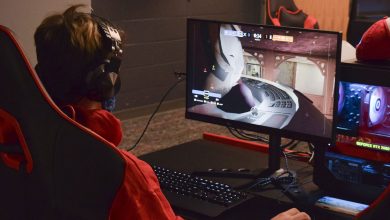Nine Interesting Speed Cubes You Should Give A Try

Rubik’s Cube has entertained thousands of people since its launch. We have all tried solving it at least in our life. Some have been successful at solving it and moved on to the more complicated versions. Many have created newer and bigger versions of the original Rubik’s Cube in order to challenge themselves and others. You might want to enter this fascinating world with a 3×3 Cube and go further to some of the following nine interesting speed cubes.
We give you the lowdown on some of the engrossing variations that have been created.
Nine Interesting Speed Cubes You Should Give A Try:
1. NxNxN Cube
The NxNxN Cube or puzzle is one where the number of cubies in length, breadth and height is the same. The puzzles fitting under this category start from 2x2x2 and go all the way to 33x33x33! The record-breaking 33x33x33 Cube was built by Grégoire Pfennig in over 200 hours using more than 6000 moveable parts!
2. Pyraminx Cube
This tetrahedron-shaped twisty puzzle is in the shape of a triangle and made up of 3 layers. It has four triangular faces, each of which contains similar nine smaller triangles. It was designed by Uwe Mèffert in 1970 but patented only in 1981. Dominik Górny of Poland holds the world fastest record for solving this Cube in 0.91 seconds!
3. Megaminx Cube
The Megaminx cube is a dodecahedron-shaped face-turning twisty puzzle and is identical to the original Rubik’s Cube. Serial cube maker and presenter Uwe Mèffert holds the copyright to this Cube. There are several versions of this particular Cube, with the most popular version consisting of 50 individual pieces. The world record for this Cube fastest solve is 30.39 seconds!
4. Ghost Cube
An interesting variation of the 3×3 Rubik’s Cube, the Ghost cube, is a shape-shifting puzzle. When scrambled, it looks nothing like its unscrambled form. Here, the Cube isn’t solved when all the colours match, but when the puzzle matches its original shape- a cube.
Adam G Cowan developed this puzzle in 2008 with the aim to offer a 3×3 modification that would be extremely challenging with just a single solution. This Cube is available in sizes ranging from 2×2 to 7×7.
5. Braille Cube
The Braille cube was designed to enable the blind to join in the cubing fun. It’s similar to the Rubik’s Cube but has raised dots, the braille language, to help the blind solve it. These special characters allow the blind to differentiate the sides in order to unscramble the Cube. These special characters might include designs or colour names that need to be matched.
Related Read – Best Ways to Spend Time with Your Children
6. Octahedron Cube
The twisty octahedron puzzle consists of the following key characteristics:
- Eight sides- each side is an equilateral triangle which is all identical
- 12 edges- the line where two sides meet
- Six vertices- the point where four edges meet
There are three variations of this twisty puzzle:
- Skewb Diamond
- Face-Turning (F.T.) Octahedron
- Corner-Turning (C.T.) Octahedron
7. Domino Cube
The 2x3x3 Domino cube is a modified version of the 3x3x2 Rubik’s Cube. Some sides of the Cube can’t be turned 900 as this would block the puzzle. The original Domino cube of the 1980s had dots on it, hence the name. The QJ Model that is commonly found today uses stickers instead. This Cube also comes in the 3x3x4 size.
8. Helicopter Cube
Since the invention of the Rubik’s Cube, we have been witness to several variations and modifications of the original Rubik’s Cube.
The Helicopter cube finds a special mention, as it is an entirely new concept. Developed by Adam G Cowan in 2005, it wasn’t until 2006 that Adam could create his invention with the aid of 3D printing. An entirely new set of algorithms are required to solve this Cube. Even the most experienced cubers are unable to solve it without receiving hints or going online!
9. Skewb Cube
It’s a combination puzzle as well as a mechanical puzzle conceived by Tony Durham and advertised by Uwe Mèffert. The corner-turning twisty puzzle is made up of 8 corners and 6 square centrepieces. This is a deep cut puzzle where every twist affects all six squared pieces. Its unusual look might deter some who are only used to the Rubik’s Cube, but it is really easy to solve once you get the hang of this twisty puzzle. The current world record for the fastest solve hovers around the 1-second mark!
Conclusion
These are only some of the numerous variations of Rubik’s Cube that have been created today. We are sure there will be newer versions invented.
We believe that once you embark upon your journey of speedcubing, you are going to solve at least a few of them! Who knows, maybe one day you would invent your own version of a modified Rubik’s cube! Who knows your name might soon be on the inventors’ list!
Keep Cubing! Keep Inventing!





